Rums Revisited #1: Foursquare, Holmes Cay, Equiano and More
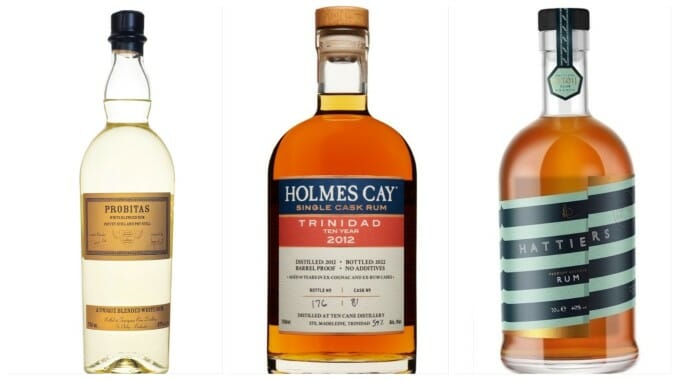
Revisited is a Paste series that gives us a welcome excuse to go diving through the dustier corners of our liquor cabinet to taste bottles we haven’t sampled for a while, in search of fresh perspectives. You can see all previous entries in the series here.
During the pandemic era, there have occasionally been times when the flow of new spirits crossing my desk has slowed to a crawl. Of course, there have also been boom periods, especially in the last year, wherein it seemed like every major spirits company was trying to launch new products at the same time. Regardless, the slower periods served one important purpose—to remind me of the pleasure of diving back into the past to taste interesting bottles I haven’t visited for a while.
The fact that our taste buds and impressions of taste are constantly changing is one of the great, but misunderstood realities of criticism. With some products, one might continue to love a flavor profile for a decade, with seemingly nothing having changed. With others, though, a revisit six months after the initial taste might seemingly change everything, even if the contents of the bottle are fundamentally unaltered. We tend to underestimate just how much we can change in a relatively short period.
And so, I thought it was about time for me to give my rum collection some love, as I sample a handful of bottles I haven’t visited for a while. Here are some fresh perspectives on bottles from Foursquare, Holmes Cay, Damoiseau and beyond.
Foursquare ProbitasMSRP: $30
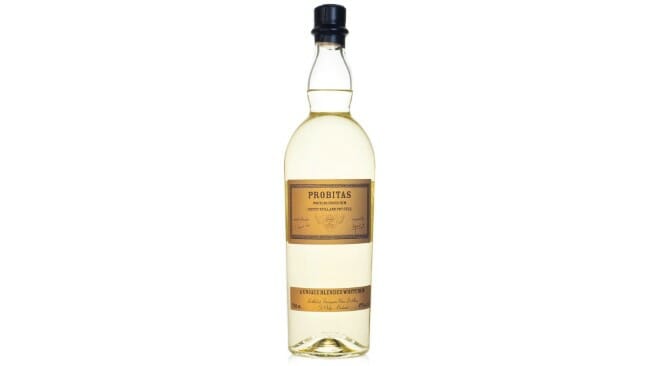
This bottle is actually not entirely Foursquare, nor is it known as Probitas everywhere—outside of the U.S., this brand is called Veritas. Regardless, this is a blend of lightly aged Foursquare Barbados rum (pot still), unaged Foursquare rum (column still), and unaged Hampden Estate Jamaican rum (pot still). Effectively, this is meant to be a high-quality, but still attractively priced take on what consumers think of as “white rum” or very lightly aged rum, with a slightly yellowish tinge that hints at the fact that a portion saw some time in barrels. The moderately advanced 47% ABV (94 proof) makes it a versatile mixer that can also be sipped, and this rum is frequently cited by rum geeks as a daiquiri favorite in particular. The Hampden component is reported a lower ester rum, making this one more balanced and less explosively funky.
On the nose here, I’m getting vanilla and juicy pineapple, along with the suggestion of shaved coconut. On the palate, it’s a very tasty combination of fruity esters, banana, pineapple, coconut and something fresher that suggests grass clippings. Fruity, with mild sweetness and well-structured heat, this does seem like pretty much center of the bullseye when it comes to an ideal daiquiri profile—bold enough to let some of its varietal character shine through, but not too dominated by age or oak to detract from what is meant to be a very light and fresh cocktail.
Holmes Cay Trinidad 2012 10 YearMSRP: $140

This Holmes Cay bottling is an interesting creation, one that gives a glimpse into a now shuttered rum distillery as it might have eventually operated if it had been able to establish itself in a more permanent and successful way. Trinidad’s 10 Cane Distillery was a project of Moët Hennessy that was only in operation for about 10 years—its philosophy ran counter to the majority of Trinidadian rum, because it was distilled from fresh sugar cane juice rather than molasses, and in pot stills rather than column stills. The flagship 10 Cane products were blended with a portion of more traditional molasses based, column still Trinidadian rum from powerhouse Angostura, but this bottling is a more mature sample of 10 Cane’s house product, albeit given an extra period of maturation in cooler climes. This one spent its first four years tropically aging in ex-cognac barrels, before then spending six years in the U.K. in ex-bourbon, for a total of 10 years. Like pretty much all Holmes Cay single barrels, it’s bottled at cask strength, which here is 59% ABV (118 proof).
On the nose, this one is pretty expressive, with notes of palm sugar, caramel, orange marmalade, plum and spice. It’s a little hot, with whiffs of gasoline, but also a whole lot of spice and wood-oriented character—fragrant cinnamon and allspice, hinting at a spice-forward oak profile. On the palate, this one is pretty bold, fruity and spicy, with the fruit impressions heading in a darker directions—I’m getting grape and especially cherry, with a hint of cherry lozenge. There are also hints of banana on the back end, and faint cane juice grassiness. All in all, though, this actually tastes more like aged molasses pot still rum than cane juice rum to me, which has to do both with the spice character from distillation and likely much to do with the oak profile. There’s some dryness from the oak, but it’s mostly contributed a ton of spice, with heavy baking spice notes and fruitiness likely enhanced by the cognac casks in particular. All in all, this is bold, a little bit hot, but really flavorful and spicy. A big, flavorful rum that makes you wonder what this distillery might have been able to achieve if it had stuck around and focused on premium products.
Equiano Light RumMSRP: $46
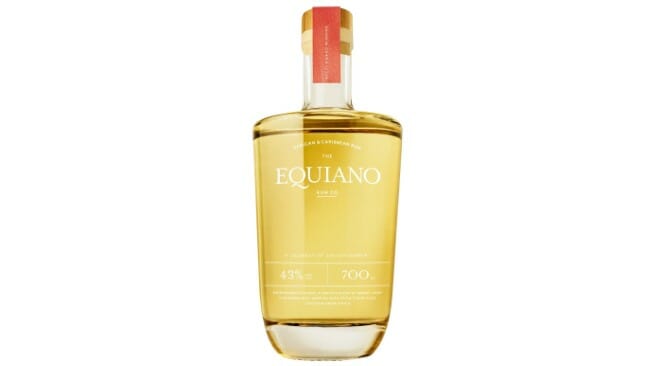
We’ve previously reviewed Equiano Original Rum, which bills itself as the “world’s first African & Caribbean rum,” being a blend of molasses-based aged rums from the island of Mauritius (cognac cask aged) and Barbados (Foursquare, bourbon casks). That blend was quite nice, and it serves as the flagship for the Equiano brand, but this lightly aged expression also has some interesting novelty going for it. Like the well-aged Original, this one incorporates rum from Barbados and Mauritius, but they’re significantly different spirits. Here, the Foursquare component is lightly aged rum that has been in bourbon barrels for three years—not sure if it’s been filtered at all to remove color, but the resulting rum has a light yellow hue. It’s blended with unaged rum from Mauritius, but this is fresh sugar cane juice rum rather than the aged molasses rum found in Equiano Original, which should make a significant difference to flavor profile.
On the nose here, I’m getting vanilla bean and pineapple, but also more savory notes and herbal notes of bay leaf. There’s some earthiness, and the second time I’m tasting this I’m finding more of the fresh, agricole-like grassiness and light funk this time. It’s actually quite earthy, but there are hints of more traditional estery flavors as well, likely contributed by the Barbados rum. Notes of green pineapple and vanilla cream make for an interesting dram, though it’s a little bit more booze-forward than one might expect for the relatively restrained 43% ABV (86 proof).
Hattiers Premium Reserve RumMSRP: $40
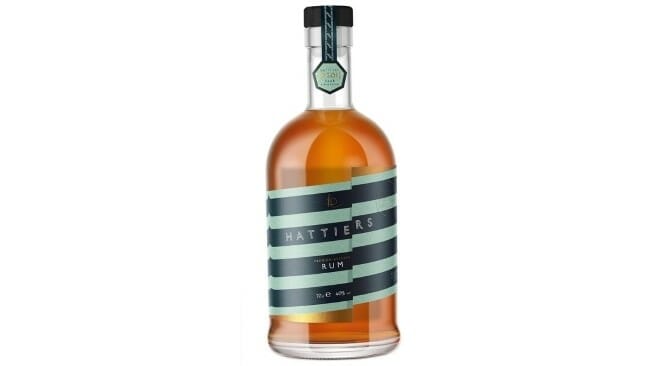
Sourced blends used to be a bigger portion of the rum market than they are today, as the growth of the segment has given more of a spotlight to individual distilleries promoting their own brands, rather than those distilleries just selling rum to blenders who are looking to make a rummy chimera. This release, though, Hattiers Premium Reserve Rum, is more in the style of those older Caribbean/Central American blends, being a combination of Barbados, Panama, Dominican and Guatemalan rums. Specifically, this is 8-year-old pot and column rum from Foursquare, 6-year column still rum from Panama, 8-year Dominican, and 4-year-old Guatemalan rum, though the majority of it is Bajan. It’s then blended in the U.K. and released on the low end of the spectrum at a mild 40% ABV (80 proof). The apparent goal would be to make an easygoing blend that still shows off some multi-island complexity, at a fair price.
And indeed, that’s pretty much what we have here. Hattiers Premium Reserve has a nose of molasses and green apple, with vanilla and sweet stem ginger. I’m also getting toffee, a whiff of ethanol and somewhat green oak. On the palate, this is a little watery in texture, but the flavors are more promising. There’s tart apple, ginger, plenty of vanilla, along wtih slightly spicy-hot ginger and chiles or black pepper. Quite dry overall, the oak makes this a very adult feeling rather than decadent blend, with some subtle stone fruit traces. A pretty all-purpose, mixable blend.
Damoiseau Rhum Blanc 50%MSRP: $30-40
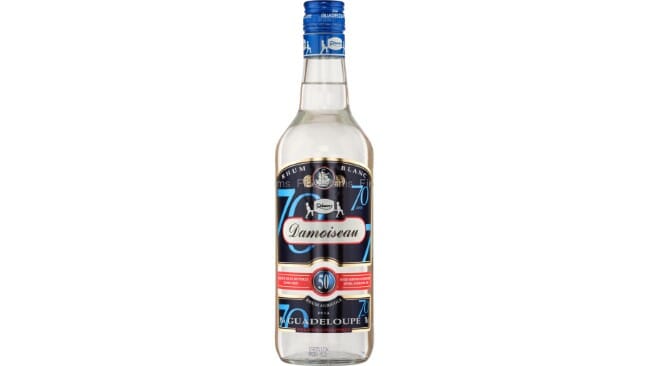
Most of the sugar cane juice-based rhum agricole consumed in the U.S. tends to be from the island of Martinique, and I have relatively little experience with agricoles from its northern neighbor Guadeloupe. The production methods are pretty similar, though, and so are the products—cane juice rhum, distilled in column stills and often consumed unaged at fairly powerful strengths. Like many Martinique brands, this Damoiseau unaged rhum is available in multiple strengths up to 55% ABV; this one is the slightly less punchy 50% ABV (100 proof). These rhums are unaged, though they are “rested” in wooden vats for a few months after distillation. Damoiseau, meanwhile, is one of the most common and widely consumed rhums on the island of Guadeloupe.
On the nose, this one certainly has the profile of classic Caribbean agricole, full of funky pineapple and tropical fruit, mango and guava. It’s also quite earthy and wild, with forest floor aromatics of mushroom and vegetation, along with a touch of toasted sugar. On the palate, it’s a bit drier than I was expecting from the nose, dank and earthy, with moderate heat. It’s not as bright as some of the blanc agricole I’d compare it against, being more musky, vegetal and complex. There are some interesting floral characteristics, along with licorice-like spice, and slight bitterness as well. I’m not sure this would be a go-to for neat drinking for me, but I’m sure it would more than carry its weight in the arena of tiki cocktails.
Jim Vorel is a Paste staff writer and resident beer and liquor geek. You can follow him on Twitter for more drink writing.






































